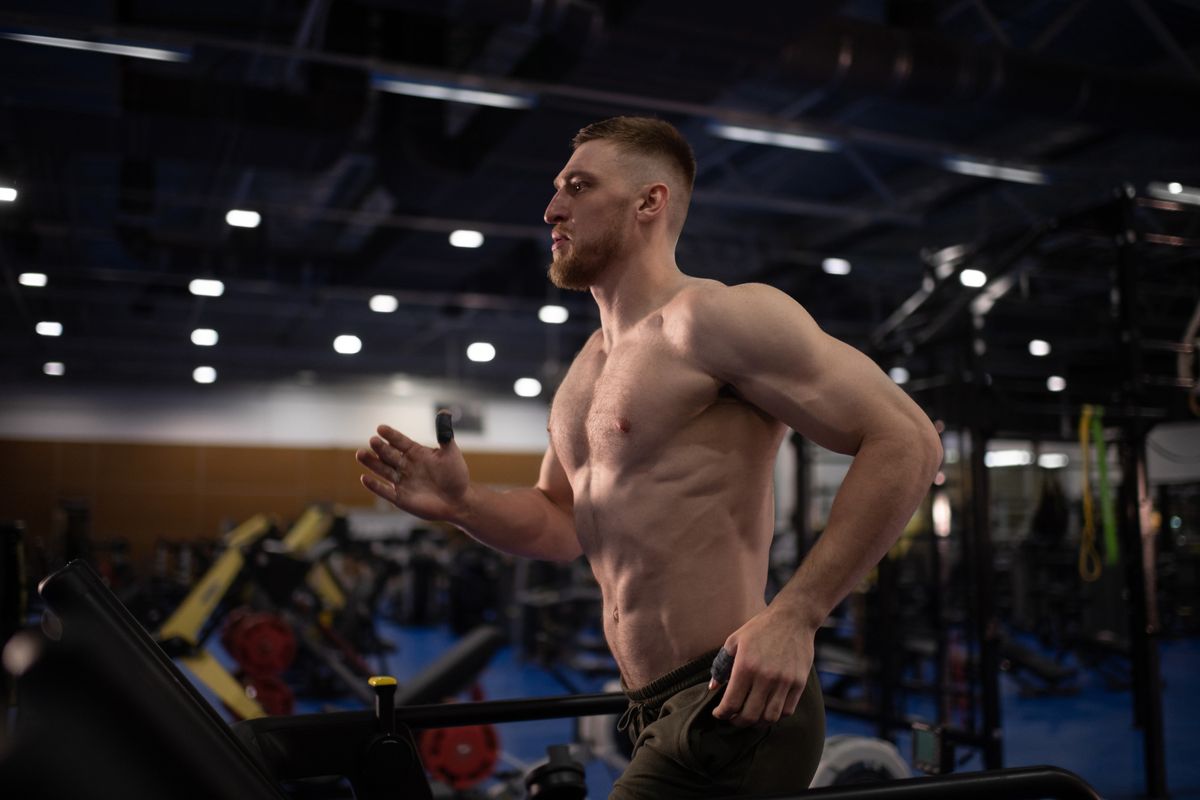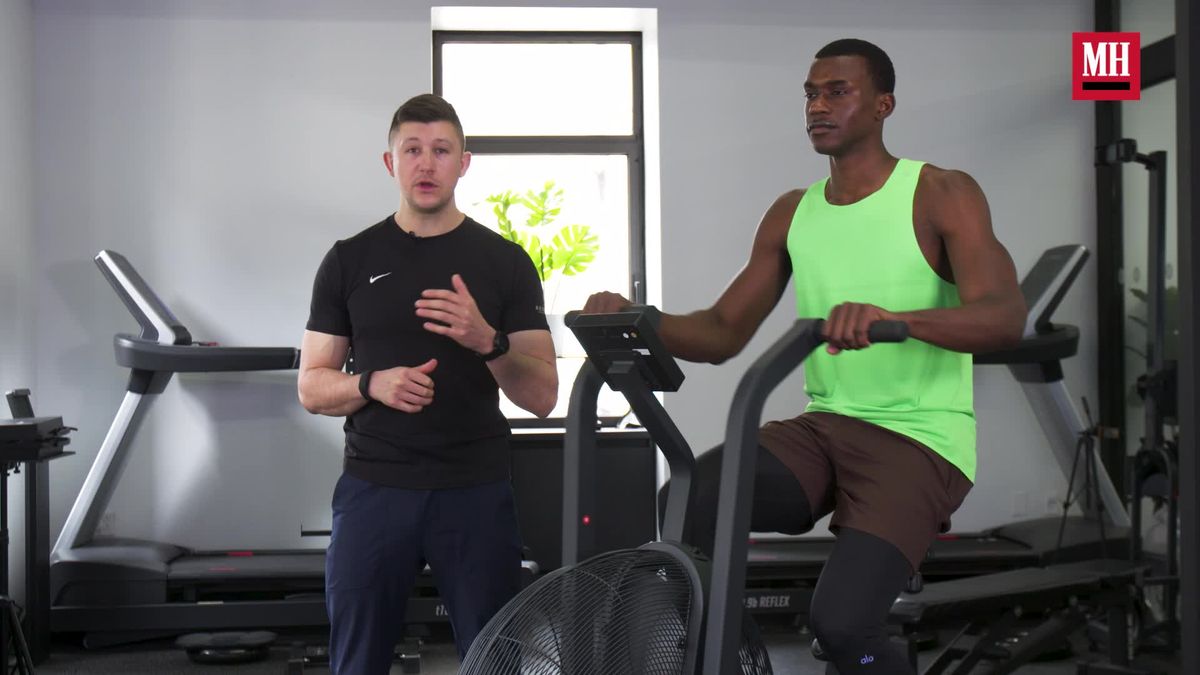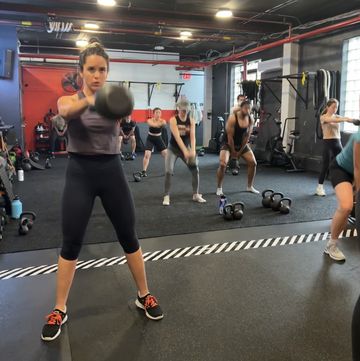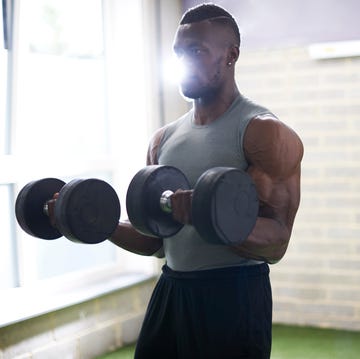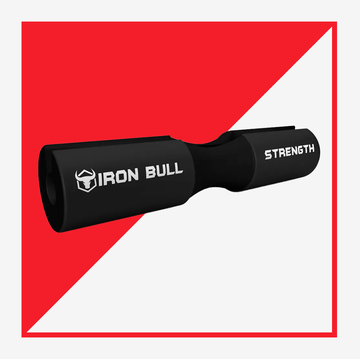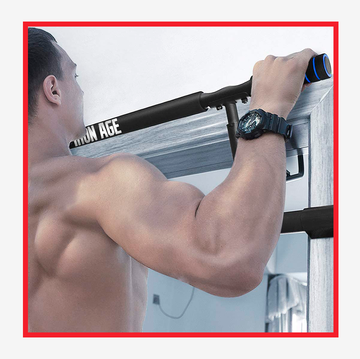ONCE UPON A TIME, muscle-minded guys were told they had to choose between cardio and lifting weights. The two were considered mutually exclusive—lifting added bulk that torpedoed stamina and endurance for aerobic athletes, while cardio not only favored the wrong muscle fibers for building strength and muscle, but also sabotaged efforts to realize those same goals (or so everyone thought). The result was an institutional rift that inspired an unfortunate dogma: lifters didn’t run, and aerobic athletes didn’t lift.
Fortunately, science has proven the truth of what plenty of high-level athletes could have told you about that type of rigid training split: For the majority of fitness goals, it’s nonsense.
Research shows that incorporating cardio into a lifting program can boost stamina and training volume, helping you bang out more reps and perform more exercises during each workout. Aerobic athletes (runners, cyclists, rowers, etc.) who incorporate weightlifting into their training plans, meanwhile, can enjoy improvements in not only speed, economy, and power output, but also time to exhaustion. What’s more, lifting weights can even help such athletes improve VO2 max, according to University of Oklahoma researchers.
Bottom line, no matter what your training focus is or fitness goals are, the question is no longer whether you should include both cardio and strength training into your workout program, but rather how to do so most effectively—and if you’re too busy to perform them in separate workouts, which to do first during an individual workout or on the same day. Should you do cardio before or after weight training?
How to Decide Between Cardio Before or After Weights
If you were to poll personal trainers about the questions they receive most often, there’s one that would occur on almost every list: What should I do first during a workout: lifting or cardio?
It’s a loaded question, and the full answer depends on a number of factors, including your fitness level, exercise experience, athletic goals, and how much time you can devote each day to working out. It’s also somewhat of a false dilemma, as there are a number of ways to perform strength training and cardio simultaneously, such as high-intensity interval training (HIIT) and circuit training. But if you have general fitness goals, you want to approach cardio and strength training separately in the same workout, and you’re looking for a general rule, here it is: Lift first, then do cardio second. If you're looking to split your training into a two-a-day workout split, follow these tips to optimize your efforts.
Why Cardio Should Come Before Weights
The reason is that strength training typically involves external loading (e.g., with a barbell, dumbbells, kettlebells, resistance bands, etc.), and thus has a more acute injury risk. Pre-fatiguing your muscles with cardio prior to lifting weights will only elevate that risk—not to mention torpedo weightlifting performance. In short, you won’t be able to lift as much or perform as many reps as you would if you started with your strength training.
If you plan on lifting heavy, you need your muscles to be fresh in order to do so with good form and to load them sufficiently to optimize their growth stimulus. You simply can’t do that if you “pre-fatigue” your muscles with cardio.
Downsides of Cardio Before Weights
Of course, there’s also the counter argument: If you lift weights before doing cardio, won’t that inhibit your aerobic performance? The answer is yes. Research suggests that you’ll likely notice a reduction in power, speed, and stamina, providing yet more incentive to perform strength training and cardio on different days.
But what lifting weights prior to performing aerobic exercise won’t do is significantly increase your risk of injury—and that’s a key difference to keep in mind when designing your workouts and programing your training plan.
Exceptions to the Cardio Before Weights Rule
As with all things in life, some rules are meant to be broken, and the “lift first, do cardio second” decree is no different. Here are a couple of instances when you should flip the script.
Warming Up
Working out without warming up is like driving a car in winter without letting it idle first—you’re going to strain your engine or (at the very least) compromise its performance.
Warming up with a bit of light cardio prior to any workout—whether it be strength or cardio based—will help prime your muscles for action. You’ll increase blood flow throughout your body, excite your nervous system, and increase your mental focus, which will all get you primed for a great sweat session.
HIIT and Circuit Training
There are also times when it’s appropriate to combine strength training and cardio in the same workout. HIIT and circuit training are two of them. Protocols that get you moving like EMOM and AMRAP are two more. The basic idea is this: By prioritizing work efforts and minimizing rest periods, you keep your heart rate elevated and metabolism cranking while challenging your muscles and stimulating hypertrophy.
In short, you get the best of both worlds—the calorie-burning and endurance-boosting benefits of cardiovascular conditioning and the muscle-building and power-developing rewards of strength training.
But here’s the thing: You shouldn’t do these high intensity cardio workouts every day. In fact, you should only perform it two to three times per week (at most), because if you do it more often, your body won’t have time to recover sufficiently between sessions. So what should you do on the other days? You guessed it—strength training and/or lower intensity cardio.

Trevor Thieme is a Los Angeles-based writer and strength coach, and a former fitness editor at Men’s Health. When not helping others get in shape, he splits his time between surfing, skiing, hiking, mountain biking, and trying to keep up with his seven year-old daughter.
